Samsung Galaxy Nexus & Ice Cream Sandwich Review
by Brian Klug & Anand Lal Shimpi on January 18, 2012 1:34 PM ESTCamera - Stills and Video
For whatever reason, the Nexus line has never been synonymous with good camera quality. The Nexus One, Nexus S, and now Galaxy Nexus have shipped with 5 MP rear facing cameras, and though quality has increased with each generation, optical quality has never really been cutting edge. The Galaxy Nexus again sports a 1.3 MP front facing camera and 5 MP rear facing camera with an LED flash.
When I learned that TI had been selected as the silicon partner for Android 4.x, one of the first things that struck me was that it was highly likely they’d turn around the stigma that Nexus doesn’t care about camera quality. TI has traditionally had great ISP in their SoCs, and we’ve seen good things out of OMAP4 in the past. The fruits of that collaboration manifest themselves in a few places on the Galaxy Nexus, but the most obvious is the device’s instantaneous capture functionality.
The feature is simple - tap the camera button and you capture a full size 5 MP image of the 960x720 preview frame being displayed. No doubt, ISP is simply capturing a buffer of images constantly, and when you tap on the capture button you grab the current one. It works extremely well in practice, you can mash the button pretty fast. I recorded and measured a capture speed of ~2.7 FPS, which is pretty darn impressive for a smartphone.
There’s no preview after capture, though you can now tap the small thumbnail and get a full screen preview of the last captured image without leaving the camera app.
There are also options to quickly send the image off to some social services based on their own intents.
It’s worth talking about the sweeping positive changes that have been made to the entire Android camera UI as well. If you played the audio sample above, you’ll notice that the guillotine-sounding capture sound from Android 2.x has now been replaced with a much better tone. The rest of the UI now looks and feels accordingly less hokey. Iconography rotates immediately based on orientation, and all the menus feel fluid.
Under settings for still capture are options for flash mode, white balance, manual exposure, some shooting modes, and inside the expanded menu picture size (5MP, 3MP, 2MP, 1.3MP, VGA, QVGA) and an option for whether or not to store geolocation information. On the front facing camera you get auto white balance, exposure, scenes, and shooting sizes of 1.3 MP, VGA, and QVGA.
The capture preview also fully implements tap to focus and expose, and tracks faces around if in the scene. I noted a small change between 4.0.1 (no doubt the result of what was noted in some other reviews) - pressing and holding the capture button no longer toggles an AF/AE run, instead still image capture runs continuous auto focus just like video. To actually verify focus, your only option is tapping to focus. I feel like this does make some sense if you interpret instant capture liberally - obviously you still need to focus - but it does break the capture button paradigm that’s been established for a super long time. Just make sure you’re focused before tapping the capture button.
The other cool new feature is a panorama mode, which is now directly incorporated into the Android camera UI. Switch into this mode, and the preview window becomes smaller, but now enables you to shoot panoramas. Hit capture, and you can pan to create an image up to 3936 pixels wide by about 700 pixels tall. I created two and tossed them in our miscellaneous gallery. In this shooting mode there aren’t any options at all, but the functionality produces some pretty impressive looking results.
I mentioned that TI clearly worked with Google on developing both the instant capture and other ISP related features, and after a bit of poking figured out how. We’ve talked about OMAP4 before, and its dual Cortex-M3 subsystem. In OMAP4, these Cortex M3s are used for ISP related functionality (TI calls this its Imaging SubSystem - ISS), and by default both run a realtime operating system of their own that works together for still image compensation, ISP, and display subsystem control. Inside /system/vendor/firmware is a 4.5 MB file named “ducati-m3.bin” which contains many camera related references, including the names and types of what I believe are the two Samsung CMOS sensors used in the Galaxy Nexus. Regardless, this file no doubt contains the realtime OS which runs on both Cortex M3s.
core0: 1.00.09.44xdctools_3_22_01_21ipc_1_23_01_26bios_6_32_01_38TI_CGT_TMS470_4.9.0core1: TI-MM-DUCATI_RLS.02.00.00.00-818-ga636360xdctools_3_22_01_21codec_engine_3_21_00_13_engipc_1_23_01_26osal_1_21_00_05_engbios_6_32_01_38TI_CGT_TMS470_4.9.0xdais_7_21_00_01_engframework_components_3_21_00_17_eng
And much later on, we have endless references to what can only be the two CMOS sensors used in the Galaxy Nexus - the rear facing 5 MP Samsung S5K4E1G and front facing 1.3 MP S5K6A1G. The rear facing S5K4E1G is a 1/4” front side illuminated sensor with 1.4µm pixels and a capture size of 2608 x 1960, and the front facing S5K6A1G is a 1/6” front side illuminated sensor with 1.75µm pixels and a capture size of 1280x1024. I’m pretty certain that the rear camera also is a 4P (4 plastic elements) system with a focal length of 3.37 mm, F/# of 2.8, and a diagonal field of view of 68 degrees.
Update: ChipWorks has put the Galaxy Nexus CMOS under their x-ray machine and seen S5K4E5 markings, which is the equivalent (same specs) backside-illuminated counterpart to the S5K4E1 I outlined above. Our findings were from decompiling 'ducati-m3.bin' which contains references to S5K4E1 and no references to S5K4E5, however. Given the similarities it's possible the two share the same driver platform, and hence we see this behavior inside the ISS code.
Unfortunately with specs like those it’s very apparent that having a high-end sensor and optical system wasn’t the highest of priorities. That said, the Galaxy Nexus does have some great ISP and camera features, it’s just curious that there isn’t a better 8 MP module or at least a BSI 5 MP module in the current one’s place.
So what does still image quality end up looking like? To evaluate the Galaxy Nexus’ camera, we turned to our lightbox tests with the lights on and off, outdoor testing at our test locations, and the new semi-revamped camera tests with the ISO12233, distortion, and color checker charts.
In the lightbox tests with the lights on the Galaxy Nexus honestly surprised me with very sharp high frequency features, good dynamic range, and decent white balance/saturation. There’s some sensor noise even in this well lit scene, but nothing too crazy. Though the 5 MP sensor is FSI, it does include all the CMOS features (like correlated double sampling) that are a huge part of reducing noise. For a 5 MP shooter the Galaxy Neuxs looks shockingly good in our lightbox test with the lights on.
With the lights off the Galaxy Nexus (and Android 4.0’s camera application) correctly preflash and illuminate the scene for autofocus. We get a nicely focused and exposed image in the complete dark here, though noise reduction is clearly turned all the way up and there’s some obvious blurring from noise-mitigation, but overall again not bad at all. I’m also impressed with how even the illumination is - Samsung put a nice diffuser/fresnel lens on their single LED flash.
In the more controlled testing, I think we get a sense for how good the ISP is. The GMB color checker card looks pretty decent, and in the distortion plot we see minimal distortion (though that’s really nothing special for an F/2.8 system). In the ISO 12233 chart I can see up to the 13 line in the tangential and saggital direction, and find that thankfully Google/TI didn’t subject themselves to the sharpening kernel that Samsung usually implements. On 8 MP shooters, we can obviously recover more spatial frequencies (up to the 17 line) but the Galaxy Nexus doesn’t do all that bad here.
Next up are our outdoor smartphone camera test locations, of which 3-7 remain available and refreshed each time we get a new device. Note that although I spend a lot of time trying to make sure lighting is roughly the same, seasons do change and there’s going to be some variance in here purely due to it being outside.
Performance in locations 3, 6, and 7 looks very good. In 4 and 5 I can’t shake the feeling that the Galaxy Nexus produced very undersaturated and lifeless looking images, however. There aren’t any problems with sharpness at all in any of the images, though we’re talking about a shooting environment with ample daylight lighting the scene.
I also took many miscellaneous photos with the Galaxy Nexus (both variants) and tossed them into a gallery below. In real world shooting I encountered many more poorly lit indoor environments where you can really see the noise (and noise mitigation features) kick into overdrive. The burger photo with and without flash is particularly telling, as I took this in the same position with flash on and off.
The Galaxy Nexus’ camera is definitely not the best around, but if you do a lot of outdoor shooting in good lighting environments, the Galaxy Nexus is competent enough to get the job done. It’s really only in low light scenarios indoors or at night where its CMOS sensor really shows its age and can struggle, especially if you shoot without flash. It is very confusing why the Galaxy Nexus includes such a lower-end CMOS sensor considering the device's positioning as a super high end smartphone.
That said, what is awesome are the improvements that Google has made to the AOSP camera application, which show a phenomenal amount of polish and careful thought. The new UI is a huge jump forward from the camera application in 2.x, which never felt quite right. New features like instant capture and a much better organized UI really help the shooting experience feel awesome on the Galaxy Nexus, even if it isn’t driven by the most expensive sensor in the world.
Video
How the Galaxy Nexus captures video is the next important thing, and there are a few more awesome features here that are part of ICS.
First off, the Galaxy Nexus captures H.264 video in 1080p24 at 9.6 Mbps baseline with 1 reference frame. 720p video is captured at 30 FPS H.264 at 8 Mbps baseline. Audio is single channel AAC at 96 kbps and 48 kHz. It’s a bit odd and disappointing to see video being captured at just 24 FPS, baseline, and such a comparatively low bitrate to boot (other devices are shipping with 15-18 Mbps High Profile or 24 Mbps baseline). To date I haven’t seen any smartphone cameras capture at anything but 30 FPS, as well.

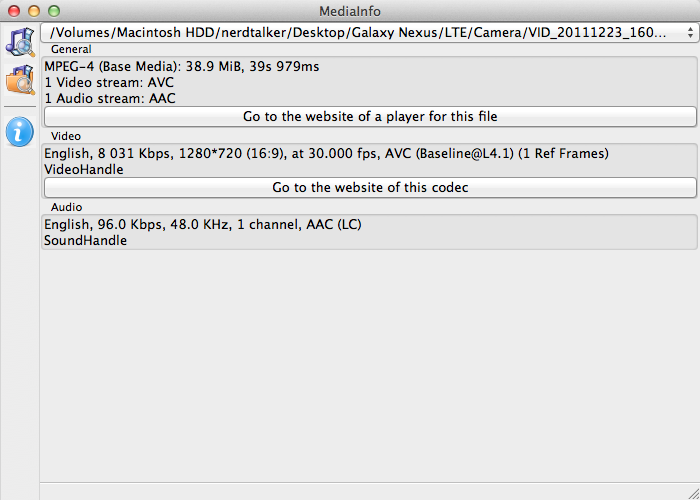
MediaInfo 1080p24 (Left), 720p30 (Right)
What’s puzzling is that OMAP4460’s encoder is capable of much more than these settings. I feel like yet again we have a Nexus that isn’t quite at parity with the video encoder quality of other devices, though this time around the device does shoot 1080p at the very least.
To gauge quality we took videos at our smartphone bench video location and shot some videos. I originally shot all my bench videos on the GSM/UMTS Galaxy Nexus running 4.0.1, and noticed some interesting behavior in the resulting video. Those are all still live, though I shot another video to highlight exactly what this behavior is and have seen some other end users note it and question what’s going on. It appears to be some overly aggressive electronic image stabilization or perhaps a rolling shutter correction firmware bug, but either way this behavior has been fixed in Android 4.0.2 and above. The videos below have been re-shot running Android 4.0.2 accordingly.
1080p24 Video Sample
720p30 Video Sample
720p30 Front Facing Video Sample
In addition, the videos have been uploaded in their original form in a big zip (136 MB) if you want to watch without YouTube’s transcode.
The 1080p video quality is decent, though you can see some encode artifacts from the lower bitrate, and honestly 24 FPS looks pretty jittery. Sharpness is decent, but the 720p sample at 30 FPS just looks better to me, and is probably the preset I’d use with the Galaxy Nexus most often as a result.
The other neat feature in video mode is of course the ability to shoot time lapse videos right in the camera UI. This is under video, not stills because the photos get merged together into a video. You can specify intervals of anywhere between 1 and 10 seconds in a few steps. In conjunction with a mount of some kind and a scene with some temporal variance, the results are actually pretty awesome.
I set up the Galaxy Nexus in a smartphone tripod mount and shot two time lapse videos - one on 10 second interval (for a sunset) and another on 1.5 second interval.
The rest of the video shooting UI is pretty similar to the one for still photography - flash settings, auto white balance, some shooting effects, video quality, and the location geotagging toggle.
I'm glad that Google fixed the annoying rolling shutter / image stabilization settings for video captured on the rear camera with 4.0.2 and above. That said, the Galaxy Nexus is still not quite up to the level of other devices with the video it's shooting on the rear side. OMAP4460 can encode 1080p video with much better efficiency and higher profile H.264 features than what it's set for right now, and I'm very puzzled why Google hasn't enabled these encode parameters which would help bump up quality.


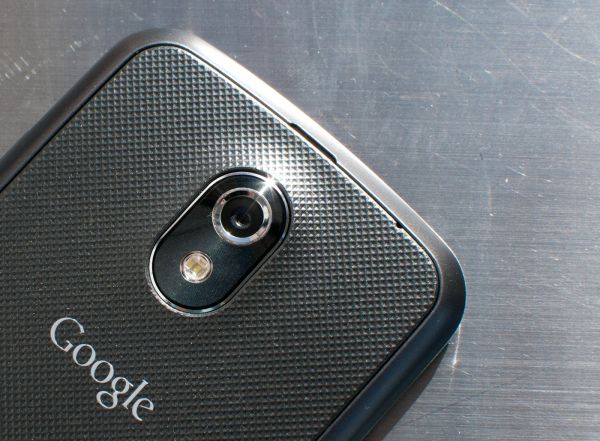
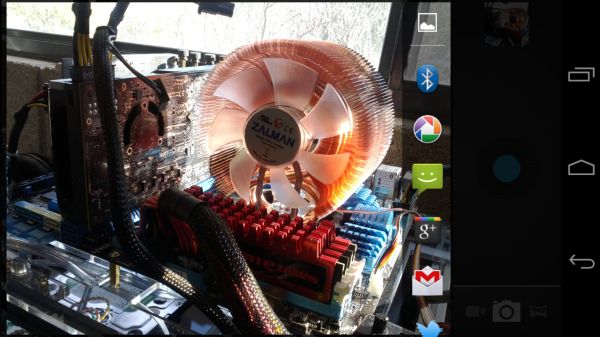
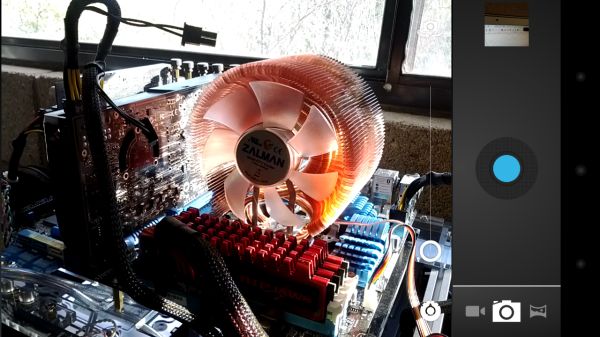
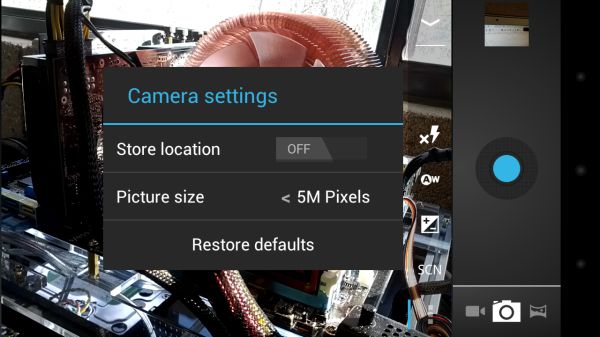






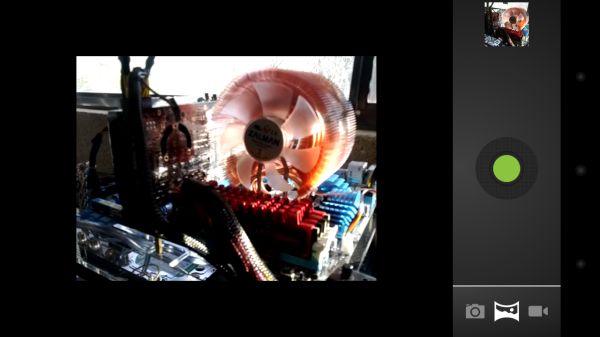
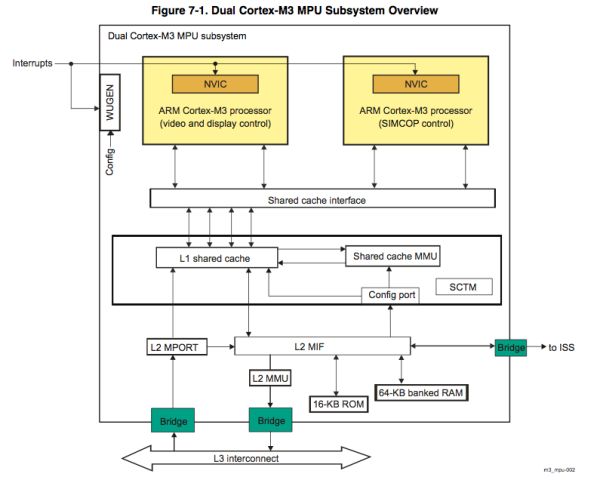










































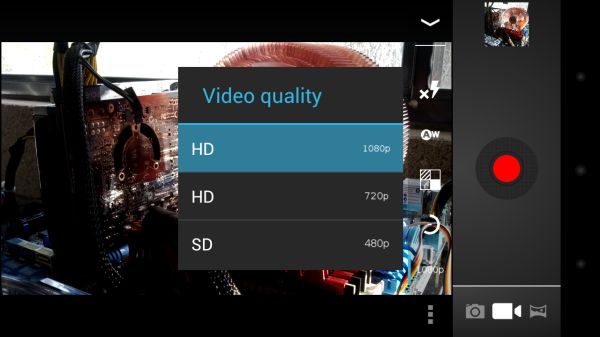
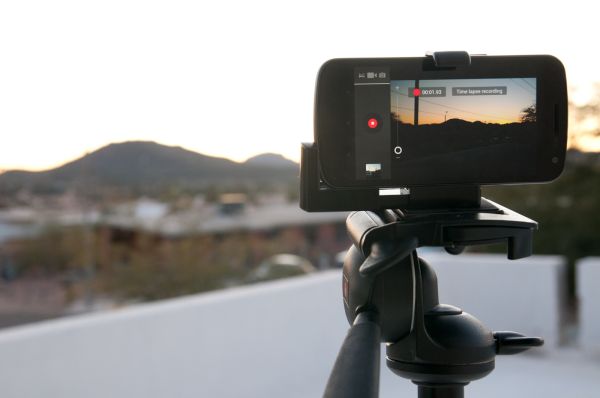








185 Comments
View All Comments
Jingato - Friday, January 20, 2012 - link
Why even bother posting a review of a phone that is over a month old? If you want to be a real news /review site you should of had a review the next day. There is no reason not to. period.get your shit together
tipoo - Friday, January 20, 2012 - link
Because they go more in depth than most reviews out there. The ones that post reviews the day after a product launch don't find nearly as many flaws and details as the AT team. There are plenty of other sites for quickie reviews, I like Anandtech for in-depth.Omid.M - Sunday, January 22, 2012 - link
That's unnecessarily harsh. If you're used to the same day "reviews" of Engadget--i.e. NOTHING technical, totally subjective measurements of everything, in the name of being the "first" with a review--then go ahead and keep reading Engadget.Brian and Anand review EVERYTHING in depth: basebands, screens, software, they even have supercurio who is well known dev in Android community for his take on audio processing. Plus, Anand and Brian were covering CES.
Anand, Brian,
Great job as always. I have a chance to pick up a Nexus LTE for $500 (since I don't have an upgrade) but will hold off; might go with iPhone 4S until Krait or iPhone 5 comes out and (hopefully) blows me away.
-Omid
@moids
Harbler - Sunday, January 22, 2012 - link
Why even bother posting a comment if you're not going to read the review? A cursory perusal of the index alone would have answered your question.Anand & Co. take the time required to turn in top-notch, in-depth reviews, and they've been doing it for longer than your favorite gadget review site has even been in business. Anandtech is, in every sense, a *real* review site.
If wholly subjective reviews of devices (provided within hours of launch) are your idea of informative reading, then please return to Engadget or whatever site you strayed from. Unlike Anadtech, sites of the sort you're looking for are a dime a dozen, and you'll find them substantially better suited to your attention span.
vortmax2 - Friday, January 20, 2012 - link
Can Brian or Anand comment on why they believe Samsung used an OMAP 4460 when they only clocked it to 4430 levels? Also, devs at XDA are having a hard time overclocking it to the 1.5GHz/384MHz max values. Any ideas? Thanks! -JamieTripp1717 - Friday, January 20, 2012 - link
Ive had it for over a month now and i upgraded from a galaxy s (epic 4g on Sprint). Watching Blue ray movies i put on my phone are simply amazing. Ive never seen anything better and i work in the electronics dept at sears. Its better than the samsung 7000 led screen. Overall it took a few weeks to really get used to Andriod 4.02 but it is an amazing improvment from 2.3.5. I cant think of too many flaws here. LTE is SOOO much fater than WiMax! i get about 25-30 MB/s when using speedtest. Upload speeds are very fast too, ave. is around 10ish MB/s. Battery life is fantastic compared to my epic 4g. At work i set my ohone to data restrict so i only get calls and texts because in my store there is NO signal at all and after 8 hours from 100% it will drop to 85%. My Epic wouldnt make it through the work day. 720p Super AMOLED+ really makes this phone a winner. Google and samsung working together is a great combo. My ONLY complaint is i wish i had an 8 or higher megapixel camera. But with the added features its pretty darn decent. No complaints except there are a few programs that are still not compatible with 4.0+ (HBOGO). I highly recomend this over any phone out or anything slated to come out for awhile anyways.Amit P - Friday, January 20, 2012 - link
I'm waiting for my THIRD Nexus to come in. I had screen problems with the first two. The screen wasn't as bright as my brothers Nexus with the same settings. The colors weren't as vivid either.Bristecom - Friday, January 20, 2012 - link
Thats why I didnt exchange mine. Even though it has a dead pixel, aside from that, the screen looks great. So I fear getting one with no dead pixels but poor brightness or colors. This screen is the best Ive ever seen. Other super AMOLED plus displays Ive seen have off colors that bother me.Bristecom - Friday, January 20, 2012 - link
I have to say, mine has a dead green subpixel and it is very clear to me even from a distance with green or white screens. Regardless, I didnt bother exchanging it. -Sent from my Galaxy Nexusmedi01 - Saturday, January 21, 2012 - link
A question, I have Galaxy S so can't compare.Could you please comment on whether black is actually black on Nexus as it is on Galaxy's?
I'm asking because dear objective Anand managed to make a photo of it that makes it look gray ("Display" page)